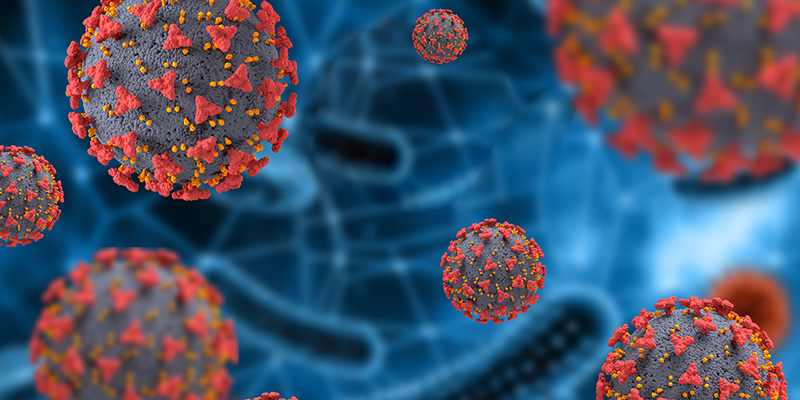Coronaviruses are a family of viruses that consists of strains that cause potentially deadly diseases in mammals and birds. In humans, coronaviruses spread through airborne droplets of liquid produced by infected people.
Few of the most uncommon but notable strains of coronavirus like SARS-CoV-2, the causative of COVID‑19, SARS-CoV the ones responsible for severe acute respiratory syndrome (SARS) and, MERS‑CoV responsible for Middle East respiratory syndrome (MERS), can cause death in humans.
Described in details in 1960s for the first time, the coronavirus derives its name from a distinctive corona or a ‘crown’ made of sugary proteins that projects from the virus’s envelope surrounding the particle. Encoding the virus’s make-up is the longest genome of any RNA-based virus – a strand of nucleic acid roughly 32,000 bases long.
There exist four known genuses in the coronavirus family, namely: Alphacoronavirus, Betacoronavirus, Gammacoronavrus and Deltacoronavirus. Out of these four, Alpha and beta coronavirus only infect mammals like bats, pigs, cats, and humans. While Gammacoronavirus mostly infect birds such as poultry, Deltacoronavirus can infect birds as well as mammals.
Symptoms of coronaviruses in different species
Upon infection with Coronaviruses, a variety of symptoms in different animals can be observed. Some coronavirus strains cause diarrhoea in pigs and in turkeys, most of the time infections are similar to the ones like in bad cold causing mild to moderate upper respiratory problems such as sore throat and runny nose. However, there also exist few lethal exceptions, which exert devastating impact on livestock and human health. These include:
COVID-19 (SARS-CoV-2)
SARS-CoV-2 was first identified during the year end of 2019 in the city of Wuhan, China. The virus was responsible for the COVID-19 disease, a contagious disease that causes mild to severe respiratory symptoms with fever, cough, and shortness of breath. The mortality of the COVID‑19 disease varies significantly around the world. It can be transmitted through person-to-person contact, mainly through respiratory droplets that become airborne when an infected person coughs, sneezes, or speaks. At the time of writing, almost every country on the planet was infected with the virus and the total infection count mounted at 8.24 million.
Originally, snakes were suspected as a potential source for the outbreak, though other experts have considered this unlikely and proposed bats as a reservoir instead. Pangolins have been identified as the link in the transfer chain. The search for the animal origin of COVID-19 is ongoing with multiple theories.
Severe acute respiratory syndrome (SARS-CoV)
Severe Acute Respiratory Syndrome, SARS was initially recognized as a distinct strain of coronavirus in the year 2003. The source of this virus has never been clearly deciphered however, the first human infections were traced back to Guangdong province of China in the year 2002.
The SARS pandemic caused more than 8000 infections of an influenza-like disease in 26 countries causing 800 deaths.
Middle East respiratory syndrome (MERS-CoV)
Middle East Respiratory Syndrome, MERS was identified for the first time in Saudi Arabia in 2012. Infected people showed symptoms of cough, fever and shortness of breath. Animal source of the virus was never officially confirmed however, evidences pointed dromedary camels as a potential reservoir of infection.
According to the WHO, around 2,500 cases of infection was identified in 27countries, resulting in around 860 deaths.
As of now healthcare experts around the world are working hard to keep the 2019-nCoV fatalities low by developing innovative treatment. Currently, when COVID-19 infected patients begin developing symptoms like cough, fever, difficulty breathing, bronchitis, sore throats and other respiratory illnesses, standard treatment protocols are followed like medication, nasal decongestants, hot showers etc. Researchers throughout the world have converged their efforts to develop a vaccine of the disease and bring an end to the catastrophic COVID-19 pandemic the world is facing today.

